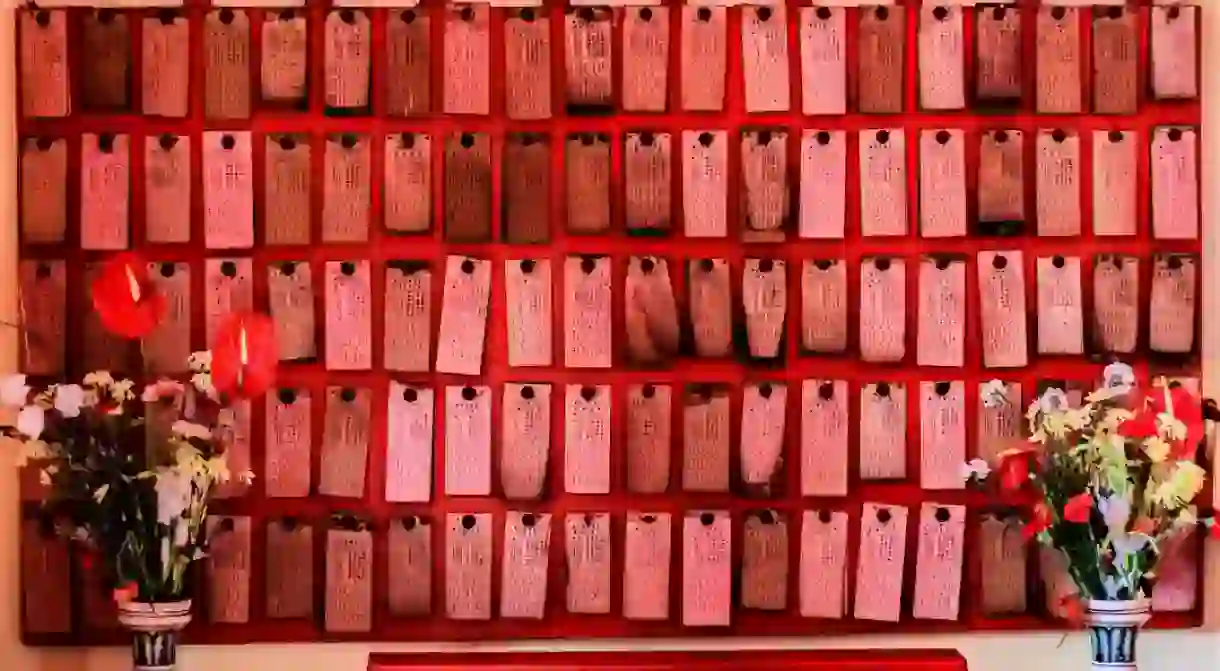Remnants Of Mumbai's Chinatown: Kwan Kung Temple

Kwan Kung Temple (locally recognized as a Chinese temple) remains the only temple of its kind, tucked away in a hidden corner of Mumbai. It was built in 1919 when the Chinese inhabitants at the time lived on Nawab Tank Road near Dockyard. We take a look back at the history of this unique monument and how its significance still lingers in the busy streets of Mazagaon.
Traces of Chinatown
India – Bombay to be specific – was once home to a Chinese community in the 1950s-1960s. That is, until 1962, when the Sino-Indian War broke out, and the Chinese inhabitants migrated back to China and, of all places, (if history is to be believed) Canada. Yet after the outbreak, there were still a few families that decided to stick by their home, a place today known as Dockyard Road in Mazagaon, at that point known as Chinatown, in Mumbai, .
If we believe Liao Hung Hsing, one among the five to six Chinese families living in Chinatown, then Kolkata boasted an even bigger Chinatown than Mumbai. Though both Kolkata and Mumbai at one point had their own Chinese school, the school in Mumbai lies empty, while Kolkata continues to teach the Chinese language and culture to young children to this day.

Liao was born in Kolkata but later moved to Mumbai with his family. The Sino-Indian War to this day still weighs heavily on his mind. It was in the 1800s when thousands of Chinese citizens moved to India while they were working for the East India Company. Given the fallout between these two nations, Liao stood by his love for India. Liao describes the events as they transpired in the documentary film The Last Of The Chinamen: ‘The dramatic drop in Chinese inhabitants in Mumbai was largely due to the fallout from the Sino-Indian War which took place in 1962. But I don’t blame the Indian people; they had to do their duty.’ Surprising, isn’t it? Maybe this is what makes Mumbai a beautiful mosaic painted with varied cultures, people and traditions.
Subsequent generations of a small number of Chinese families that remained in Chinatown, married into Hindu families – Liao’s daughter-in-law is a Hindu. Today a beautiful shrine, known as the Chinese temple, the only Chinese temple in Mumbai, remain symbolic of this turbulent period in the city’s history.

Exploring the Kwan Kung Temple Today
The entrance to the Kwan Kung Temple is unlike anything you’ll see at other temples. Also, you may expect to see dragons or Chinese figurines. In stead you’ll find a mural of three Chinese gods of blessing, longevity, and prosperity on the wall while taking the staircase to this shrine, hidden in a two-story building. Wind chimes and paper lanterns of all sizes adorn the entrance of this relatively small temple, dressed in red, the most auspicious color in Chinese culture. You’ll also notice Chinese scriptures on the wall and inside the temple.

The temple was built in 1919 when the Chinese inhabitants lived in Nawab Tank Road near Dockyard. It pays homage to the Chinese god of protection, justice, and courage, Guan Gong. Protecting the altar of the temple is a replica of General Kwan Tai Kwon, a mighty warrior.
Kwan Kung Temple is at its busiest during the Chinese New Year and Moon Festival. The environment is soothing with harmonious chants and music playing in the background, incense spreading its aromas throughout, and the wind chimes at the door bringing in the positivity with the daylight every morning.
This is a treasure so beautiful, hidden in the narrow lanes of the once-bustling Chinatown, now Dockyard Road, Mazagaon. Visit, talk to locals and thank them for loving their country regardless of its turbulent past, and admire the beauty of this little Chinese temple in the city of Mumbai.















